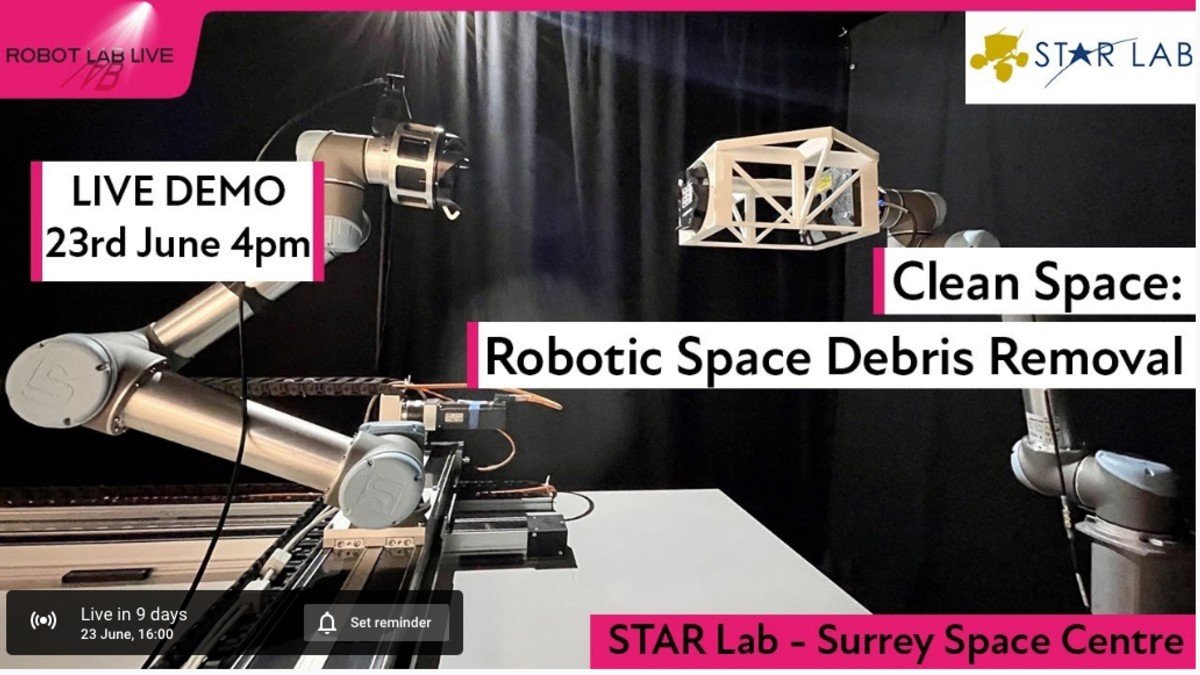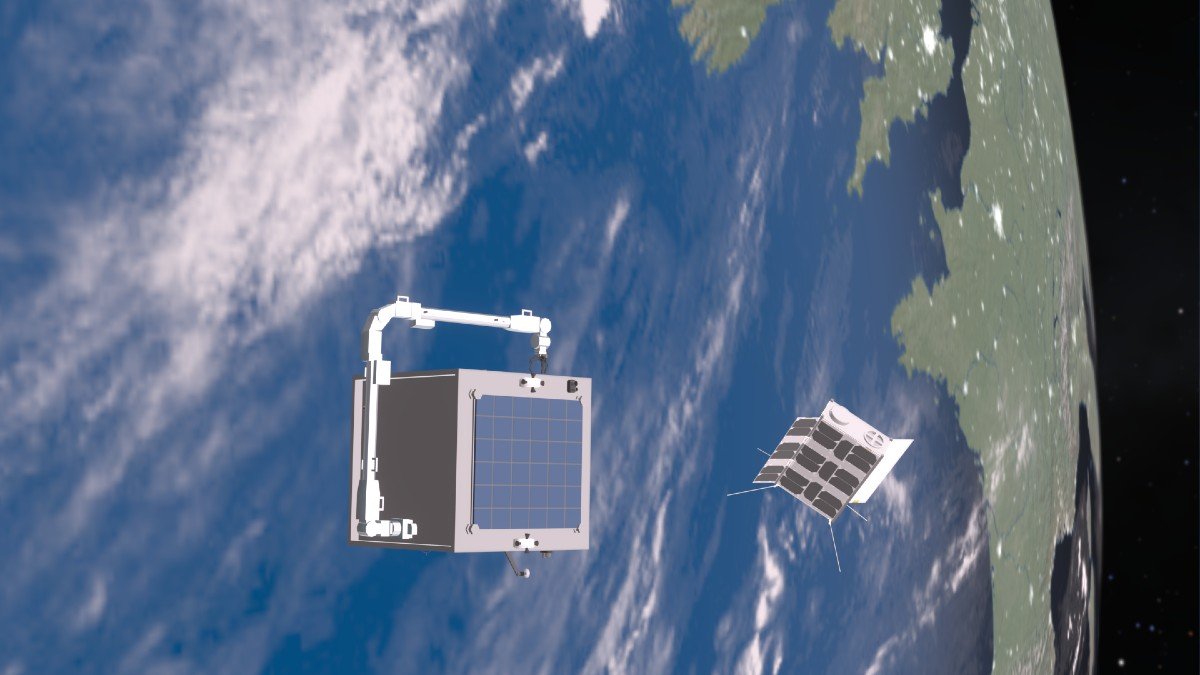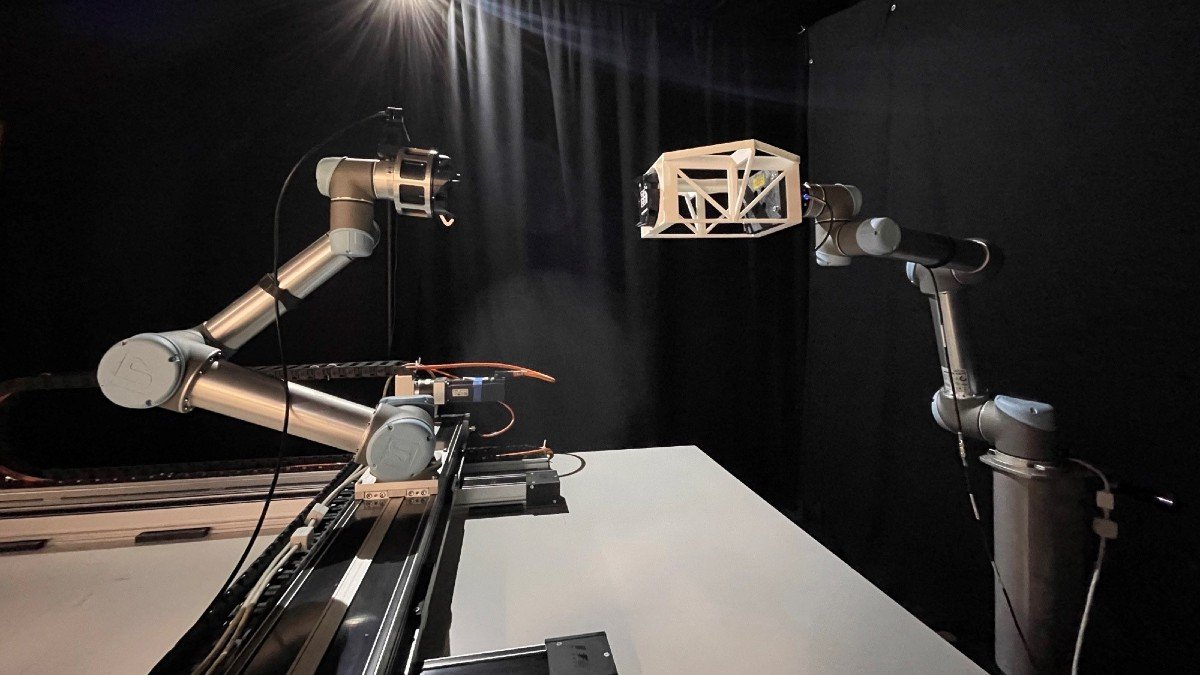Surrey academics push boundaries of AI robotics for active debris removal in space
Researchers from the STAR LAB at Surrey Space Centre are following up their recent journal publication on artificial intelligence and robotics by demonstrating the technology live at an acclaimed science festival.
Surrey's Professor Yang Gao discusses the work that she and her team will be presenting at Robot Lab Live
The research that will be demonstrated at Robot Lab Live, an interactive event at the UK Festival of Robotics 2021, first appeared in Frontiers in Robotics & AI.
This newly published journal article discusses the novel technology and how embedding Artificial Intelligence – or AI – can help space robots make decisions reliably and timely without the need for human agency. This advance obviously has several potential applications in space, such as on-orbit servicing, active debris removal, and large infrastructure assembly and construction.
Robotics and artificial intelligence
“Conventional spacecraft Guidance, Navigation and Control – or GNC – architectures have been designed to receive and execute remote or pre-planned commands from ground control with minimal autonomy onboard the spacecraft, due to many design constraints imposed by harsh space environments,” explains Professor Yang Gao, Professor of Autonomous Space Systems and Head of STAR LAB. “Modern robotic spacecraft using AI are now required, which can allow real-time decision-making by considering system information that is difficult to model and incorporate in processes driven by human operators.
“For example, GNC needs to work under a wide range of challenging scenarios, such as capturing unknown and uncooperative space debris. This can be time-consuming, expansive or unpractical for human operators to command in real time. But these eventualities could be addressed using emerging AI-enabled robotic technologies.”
Such an example where this automated technology may be useful occurred in May this year, when a robotic arm on the International Space Station (ISS) was hit by debris that punched a small hole into it. Although it didn’t affect its operation or endanger lives, an automated system using AI for 24/7 environment monitoring may have helped spot the threat earlier and avoid such an incident.
Machine learning algorithm
Professor Gao continues: “A real-world comprehensive implementation of this technology is a few years away. As an intermediate step, our research team has demonstrated a novel visual GNC solution with two state-of-the-art AI modules to replace the corresponding functions in the conventional GNC system for on-orbit manipulation.”
Dr Daniel Zhou Hao, lead co-author of the paper and postdoc researcher at STAR LAB, says: “One AI module uses techniques for modelling and controlling space robot manipulator trajectories using probabilistic modelling and reproduction to previously unseen situations to avoid complex trajectory optimizations on board.
"In the case of space debris removal, this can help ensure a free-floating servicing spacecraft can maintain its nominal flying attitude during in the capturing phase.”
Details of our developed technique to achieve the robotic grasping of the space debris can be found from another newly published journal article.
Dr Arunkumar Rathinam, another co-author of the paper and postdoc at STAR LAB, adds: “The other AI module employs a Deep Learning algorithm to estimate a target's position from two-dimensional images using a pre-trained neural network without requiring any prior information on the dynamics or state of the target, such as retired satellites or spent motors left in Earth orbit that become space junk.”
Stepping stone to future technology

Viewers can watch the live demonstration of STAR LAB's latest technology at Robot Lab Live
The Surrey team will demonstrate the technology at the Robot Lab Live event, which features top robotics research groups presenting cutting-edge robots and autonomous systems to live audiences on YouTube. The STAR LAB demo will showcase our lab-based orbital testbed, representing real-world mission scenarios such as on-orbit capturing and removal of non-cooperative spent kick motors that are among the most dangerous space junk.
“In short, our developed intelligent GNC system can be a stepping stone toward fully autonomous space robots in the long term,” concludes Professor Gao.
The Robot Lab Live demonstration takes place at 4pm on 23 June 2021 at the UK Festival of Robotics. Viewers can go to the livestream link and click Set Reminder so they won’t miss it.
Funding acknowledgment: This research work is carried out under the FAIR-SPACE project funded by UK Research and Innovation (UKRI) and UK Space Agency (UKSA) under the Industry Strategic Challenge Fund (ISCF) for Robotics and AI Hubs in Extreme and Hazardous Environments.
Learn more about studying at Surrey Space Centre.



